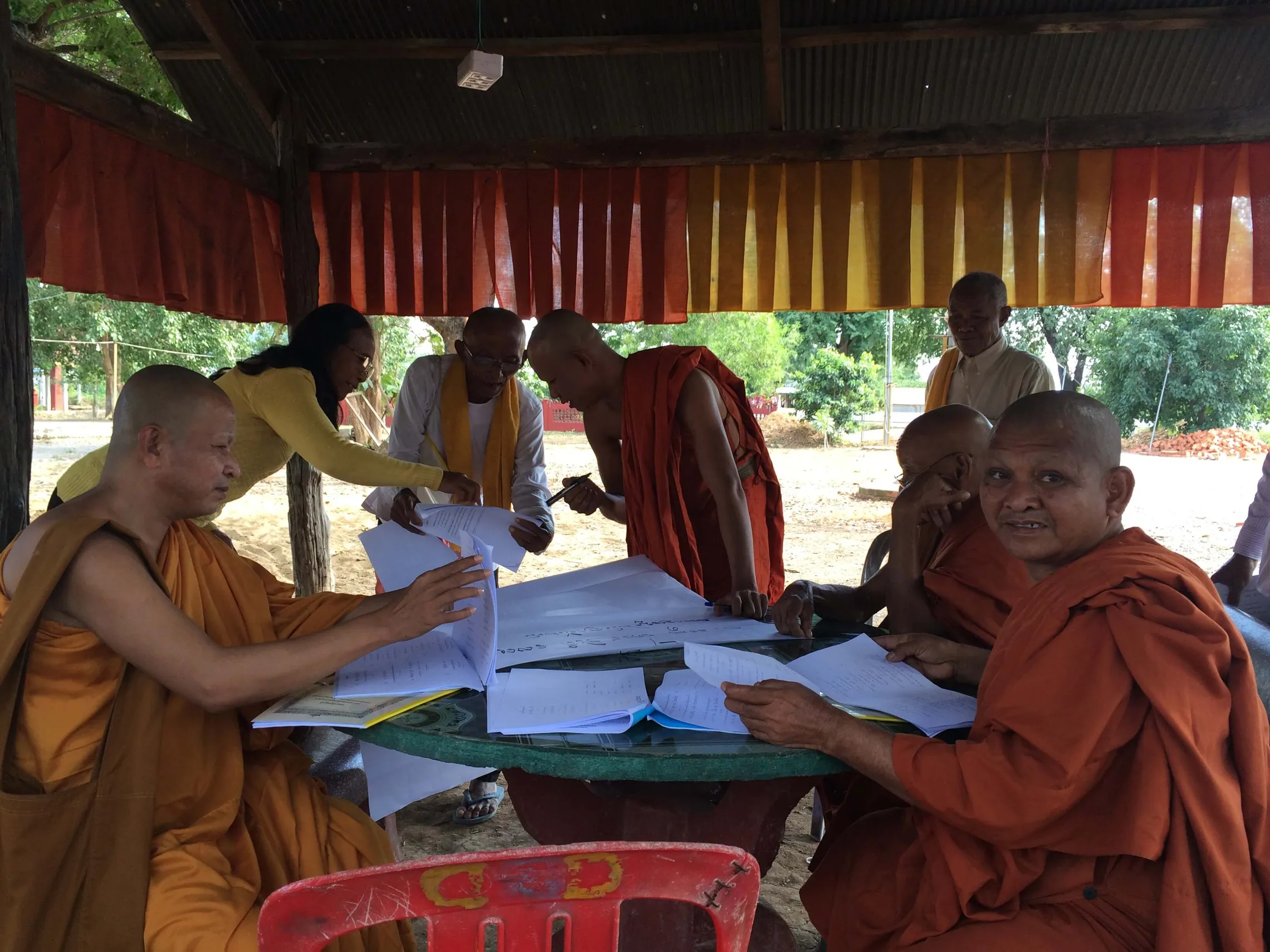The role of religion in sanitation promotion

With funding from USAID and the U.S. Presidential Initiative Feed the Future, NOURISH (2014-2020) worked with the Royal Government of Cambodia to accelerate stunting reduction through multi-sectoral actions in health, water, hygiene, sanitation (WASH) and agriculture in three project-supported provinces: Battambang, Pursat and Siem Reap. To improve the current sanitation and hygiene practices in the project-supported areas, NOURISH worked with both public and private sectors, as well as the local NGO community, fully aligning with the country’s National WASH Strategy and Action Plan. NOURISH developed the capacity of local bodies for sanitation demand creation at village levels.
The challenge
Cambodia has been experiencing significant economic growth in recent years and access to sanitation for rural populations has been increasing dramatically over the past decade. Over 4.1 million people gained access to sanitation between 2007 and 2017. During the same period, open defecation practice fell between 29-41 percentage points (from 72.5 percentage points). However, Cambodia had the highest rate of open defecation practice in Southeast Asia. Poor sanitation practices – open defecation in particular – contributed to high incidences of diarrhea. A vicious cycle existed between diarrhoea and children’s undernutrition, which contributed to stunting; the most common form of malnutrition in Cambodia. In Cambodia, the Cambodian Demographic and Health Survey (2014) found that approximately 32% percent of children are stunted.
The solution
Community-Led Total Sanitation (CLTS) is a globally recognised innovative methodology applied in the over 370 NOURISH-supported villages to mobilise communities to eliminate open defecation. One of the activities related to CLTS was partnering with religious leaders to promote sanitation. Religion in Cambodia has a cardinal influence on the thought and behaviour of huge numbers of people. As such, religious leaders helped galvanise communities to take positive actions in the area of sanitation. Towards motivating and mobilising groups of people to take up different roles in sanitation promotion at community levels, Training of Trainers (ToT) programmes on sanitation were conducted with 187 Buddhist monks in all three NOURISH provinces. These efforts were further strengthened by province-specific rollout of sanitation promotion – through monks – across 30 pagodas in the three provinces.

Religious leaders planning for sanitation and hygiene promotion
The impact
Monk Mr Pen Phanna is the Chief of Monks (Chao Athika Vat) at the Ty Setha Ram pagoda Prey Srakum village, Sya commune and was a participant of the NOURISH-led ToT on sanitation. Prey Srakum is home to 114 households with 135 families. Before NOURISH-sanitation demand triggering activities were initiated, the village had a sanitation coverage of 24.50%. Since his involvement in the NOURISH programme, Monk Mr Pen Phanna has been spreading sanitation- and hygiene-related messages at village and commune levels, during religious gatherings, sermons, etc. He said, ‘I am happy to be involved with this programme because it is important that people understand the need for sanitation facilities and start building them. I have decided that the money that is donated by community members for the pagodas is to be used to help poor households who cannot afford to buy latrines. Or this contribution can also go towards payment of labour for constructing latrines for poor households. I have been supporting poor households to build underground latrine structures using the pagoda contribution since my association with the NOURISH project.’
Through these efforts, NOURISH has engaged religious leaders as active development actors who provide substantial input in sanitation priority-setting and their latter implementation in the communities they serve. As a result of these approaches the sanitation coverage in Prey Srakum village has reached 100%.
Written by: Sunetra Lala with input from Sophornn Khaim/SNV in Cambodia
Photos by: Him Pao/SNV in Cambodia